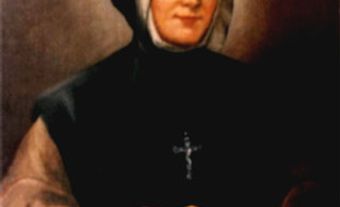Edward Patrick Roche, Roman Catholic archbishop of St. John’s, Newfoundland and Labrador (born 19 February 1874 in Placentia, Newfoundland; died 23 September 1950 in St. John’s). Roche was a prelate in the Roman Catholic Church and served as archbishop of St. John’s from 1915 until he died in 1950. He is best known for his opposition to Confederation with Canada. Roche was also a strong supporter of Catholic education in Newfoundland and oversaw the construction of many new schools. As archbishop, he championed healthcare and established St. Clare’s Mercy Hospital in St. John’s.

Edward Patrick Roche was the Roman Catholic archbishop of St. John’s, Newfoundland and Labrador, from 1915 to 1950.
(courtesy Archives and Special Collections (Collection 185), Queen Elizabeth II Library, Memorial University of Newfoundland, St. John's, NL/Heritage Newfoundland & Labrador)
Archbishop Roche
Edward Patrick Roche was born in Placentia, Newfoundland, and was educated at St. Patrick’s Hall School and St. Bonaventure’s College in St. John’s and All Hallows College in Dublin. He was ordained on 24 June 1897 and appointed to parish duties at Topsail and Manuels. In 1907, Archbishop Michael Howley appointed Roche as chancellor and vicar-general of the archdiocese. Upon Archbishop Howley’s death in 1914, Roche was appointed archdiocese administrator and consecrated as the archbishop in 1915.
St. Clare’s Mercy Hospital
Roche was keenly interested in healthcare. Following the First World War, he became concerned that Newfoundland did not have enough hospital beds. He believed better medical facilities could save many lives. Roche thought it was the Catholic Church’s duty to do something to alleviate this suffering. Although his predecessor, Archbishop Michael Howley, planned to convert a local women’s hostel into a Catholic hospital, he died in 1914 before anything could be done. The First World War further delayed the project.
In 1918, Roche began plans to transform St. Clare’s Home for Working Girls into a hospital under the direction of the Sisters of Mercy. He requested that Sister Mary Bernard Gladney train as a nurse in Pittsburgh. Shortly after Sister Bernard returned in 1921, Archbishop Roche closed the hostel and started renovations. On 21 May 1922, St. Clare’s Mercy Hospital opened with a capacity of 30 beds and admitted its first patients.
By 1937, the hospital had a shortage of beds. Archbishop Roche and the Sisters of Mercy decided to expand the hospital. The Sisters of Mercy raised $300,000 for the construction of a new hospital. In October 1939, the new hospital opened, with 100 beds and a nursing school. St. Clare’s Mercy Hospital continued to grow and is currently one of Newfoundland and Labrador’s largest hospitals.
Catholic Education
Roche had a long-standing interest in education. He was a fierce supporter of denominational education in Newfoundland. Throughout his career, he worked to ensure the Catholic Church’s right to receive state funding for Catholic schools, hire Catholic teachers, teach religion in schools and ensure that all curricula supported Catholic teachings.
In 1905, Roche was appointed to the Archdiocesan Education Committee and tasked with finding ways to challenge any proposals to change Newfoundland’s system of denominational education. During his time as archbishop, Roche worked to ensure that Catholics in Newfoundland had access to modern education facilities. During the Great Depression, he oversaw the construction or renovation of nearly 40 schools.
Opponent of Confederation
Roche’s staunch belief in denominational education was the driving force behind his long-standing opposition to Confederation with Canada. Roche worried that Confederation would threaten Catholic education and that permissive Canadian divorce laws would destroy Catholic families. He also feared that economic ties with Canada would lead to rampant consumerism. Archbishop Roche used his power and authority to dissuade Catholics from supporting Confederation. In 1916, Roche told the priests in his archdiocese that they should encourage their congregations to oppose Confederation unless the Canadian government ensured the right to denominational education.
Leading up to the Confederation referendums in 1948, the diocese’s official newspaper, The Monitor, openly supported the Responsible Government League. The paper admitted that responsible government would not bring financial benefits to the people. Instead, it argued that it would preserve a sober, honest and simple life focused on Catholic values that had been passed down from generation to generation for hundreds of years. (See also Newfoundland and Labrador and Confederation.)
Death
For most of his time as archbishop, Roche suffered from poor health. He was diagnosed with tuberculosis in 1919 and made several visits to a sanatorium in New York state for treatment and rehabilitation. Despite his health problems, Roche’s tenure as archbishop was the longest in the history of the diocese. He died in 1950, shortly after Newfoundland entered Confederation with Canada.

 Share on Facebook
Share on Facebook Share on X
Share on X Share by Email
Share by Email Share on Google Classroom
Share on Google Classroom

